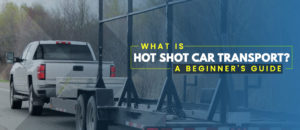Shipping a car across the country can be a daunting task, especially if you’ve never done it before. Whether you’re relocating for a new job, moving closer to family, or simply want to have your vehicle at your vacation home, understanding the ins and outs of car shipping is essential.
In this comprehensive guide, we’ll walk you through the process of how to ship car across country. By the end of this article, you’ll have all the knowledge you need to ship your car with confidence.
Understanding Your Shipping Options
When it comes to shipping your car across the country, there are several methods to choose from:
- Open-Air Transport: This is the most common and cost-effective method. Your car is loaded onto an open trailer, which can carry multiple vehicles. While it’s a popular choice, your car will be exposed to the elements.
- Enclosed Transport: If you have a luxury, classic, or high-value car, enclosed transport is the best option. Your vehicle will be protected from weather and road debris inside a fully enclosed trailer. This method is more expensive than open-air transport and inoperable auto transport.
- Door-to-Door Service: With this option, the transport company picks up and delivers your car as close to your specified locations as possible. Door to door auto transport offers convenience but might cost more than terminal-to-terminal shipping.
- Terminal-to-Terminal Service: Your car is dropped off and picked up at designated terminals. This option can save money but may require more effort on your part to get your vehicle to and from the terminals.
Choosing a Reliable Car Shipping Company
Selecting a reputable vehicle transport company is crucial for a smooth experience. Here are some tips to help you choose the right one:
- Research and Reviews: Start by reading online reviews and testimonials. Websites like the Better Business Bureau (BBB) and Trustpilot offer insights into customer experiences.
- Compare Quotes: Get quotes from multiple companies. Be wary of prices that seem too good to be true, as they often come with hidden fees or subpar service.
- Check Licensing and Insurance: Ensure the company is licensed by the Department of Transportation (DOT) and has adequate insurance coverage. This information should be readily available on their website or upon request.
- Ask About Experience: Companies with years of experience in car shipping are often more reliable. Ask about their track record and how they handle unexpected situations.
Tip: When selecting a transport company, make sure to compare services from different providers, including those specializing in car shipping and boat transport companies.
Preparing Your Car for Shipping
Proper preparation of your vehicle is essential to ensure it arrives in the same condition it was shipped if you opted for an open auto transport. Here’s a checklist to help you get started:
- Clean Your Car: Wash your car thoroughly, inside and out. This makes it easier to inspect for any pre-existing damage.
- Document Existing Damage: Take detailed photos of your car from all angles. Note any existing scratches, dents, or other damage. Share these photos with the shipping company.
- Remove Personal Items: Remove all personal belongings from your car. Not only can they add weight, but they might also not be covered by the shipping company’s insurance.
- Check Fluid Levels and Battery: Ensure all fluids are topped off, and the battery is fully charged. Address any leaks, as they can cause problems during transport.
- Disable Alarms: Disable any car alarms to prevent them from going off during transit.
- Leave a Quarter Tank of Gas: Having a quarter tank of gas is sufficient for loading and unloading. A full tank adds unnecessary weight.
- Secure or Remove Loose Parts: Remove or secure any loose parts, such as antennas, spoilers, or mirrors, to prevent damage during transport.
Understanding the Shipping Process
Once you’ve chosen a shipping company and prepared your car, it’s important to understand what happens next:
- Pickup: The shipping company will arrange a pickup time and location. Be present to inspect the car with the driver and sign the Bill of Lading, which documents the condition of the car at pickup.
- Transport: Your car will be loaded onto the carrier and begin its journey. The duration of transport depends on the distance and route. Stay in touch with the shipping company for updates.
- Delivery: Upon arrival, inspect your car for any damage. Compare it to the pre-shipping photos and note any discrepancies on the Bill of Lading. If there’s damage, document it and contact the shipping company immediately.
Cost of Shipping a Car
The cost of shipping a car across the country can vary widely based on several factors:
- Distance: The farther the distance, the higher the cost. Cross-country shipping can range from $800 to $1,500 or more.
- Type of Transport: Open-air transport is cheaper than enclosed transport. Expect to pay 30-50% more for enclosed shipping.
- Vehicle Size and Weight: Larger and heavier vehicles cost more to ship due to the additional space and weight they occupy.
- Time of Year: Shipping costs can fluctuate based on demand. Summer months and the beginning/end of the year are peak times, often resulting in higher prices.
- Location: Shipping to and from major cities is typically cheaper than rural areas due to the availability of carriers.
Tips for a Smooth Car Shipping Experience
- Plan Ahead: Book your car shipment well in advance, especially during peak seasons. This ensures availability and may help you secure a better rate.
- Communicate Clearly: Provide accurate information about your car and shipping requirements to the transport company. Clear communication helps prevent misunderstandings.
- Stay Flexible: Be flexible with your pickup and delivery dates. This can help the shipping company accommodate your shipment more easily and possibly save you money.
- Keep Documents Handy: Have all necessary documents, including the Bill of Lading and insurance papers, ready for pickup and delivery.
- Inspect Thoroughly: Inspect your car carefully at both pickup and delivery. Document any damage immediately to ensure it’s covered by insurance.
Conclusion
Shipping your car across the country doesn’t have to be a stressful experience. By understanding your options, choosing a reputable shipping company, and preparing your vehicle properly, you can ensure a smooth and hassle-free process. Remember to plan ahead, communicate clearly, and stay flexible to make the most of your car shipping experience. Whether you’re moving for a new job, heading to a vacation home, or simply need your car in a different part of the country, these tips will help you ship your car with confidence.
FAQs
Q1: What are the different methods to ship a car across the country?
A1: The main methods for shipping a car across the country are:
1. Open-Air Transport: Cars are loaded onto an open trailer, exposed to the elements.
2. Enclosed Transport: Cars are placed inside a fully enclosed trailer, offering protection from weather and road debris.
3. Door-to-Door Service: The transport company picks up and delivers the car as close to your specified locations as possible.
4. Terminal-to-Terminal Service: You drop off and pick up your car at designated terminals.
Q2: What is the difference between open and enclosed transport?
A2: – Open Transport: More cost-effective but exposes your car to weather and road debris.
– Enclosed Transport: More expensive but protects your car from external elements, ideal for luxury, classic, or high-value vehicles.
Q3: How long does it take to ship a car across the country?
A3: Shipping a car across the country typically takes 7-10 days, depending on the distance, route, and any unforeseen delays.
Q4: What preparations are needed before shipping a car?
A4: 1. Clean the Car: Wash your car to make it easier to inspect for any pre-existing damage.
2. Document Existing Damage: Take detailed photos of your car from all angles.
3. Remove Personal Items: Clear out personal belongings to avoid extra weight and potential theft.
4. Check Fluid Levels and Battery: Ensure all fluids are topped off and the battery is fully charged.
5. Disable Alarms: Prevent alarms from going off during transit.
6. Leave a Quarter Tank of Gas: Sufficient for loading and unloading, without adding unnecessary weight.
7. Secure or Remove Loose Parts: Protect or remove parts like antennas and spoilers to avoid damage.
Q5: Can I ship personal items in my car?
A5: It is generally not recommended to ship personal items in your car. Most transport companies do not cover personal belongings under their insurance, and additional items can increase the weight and cost of shipping.




